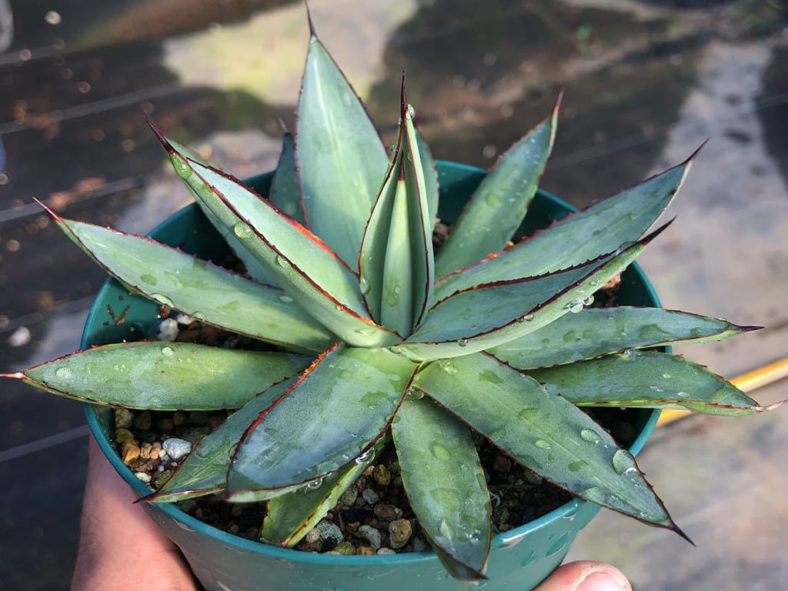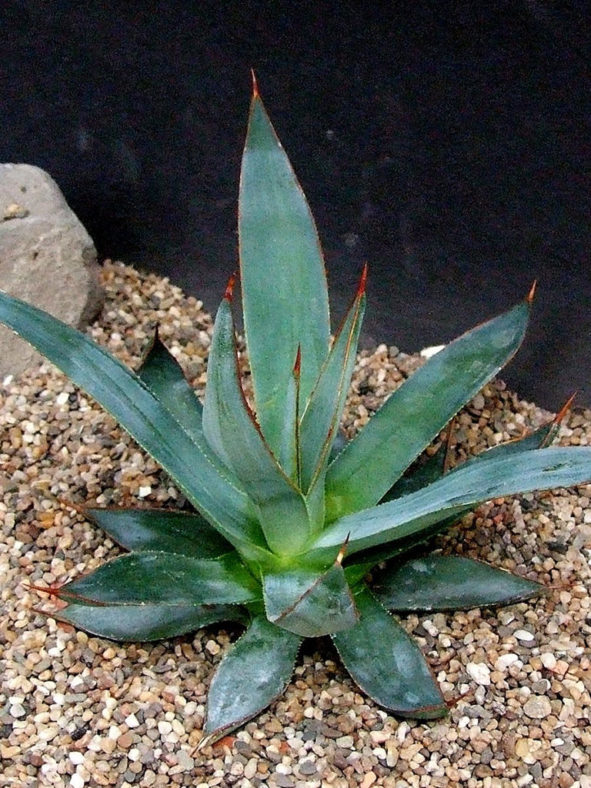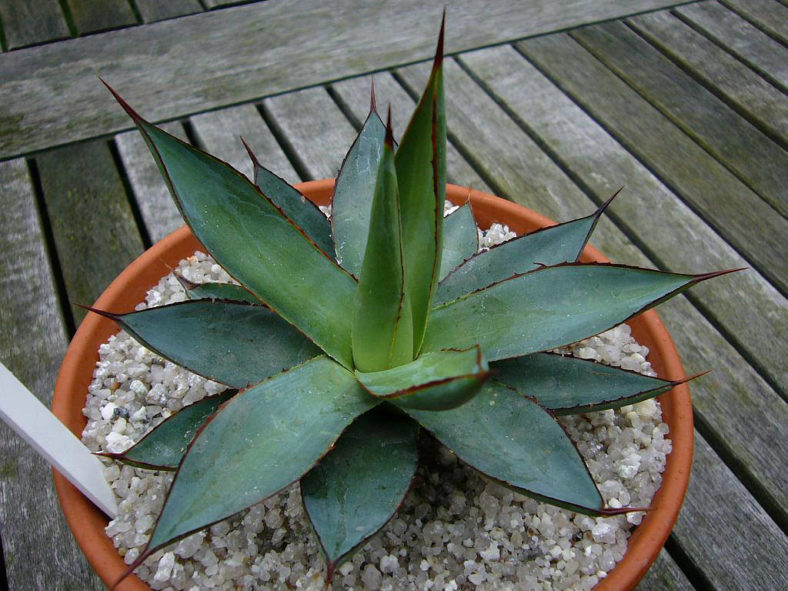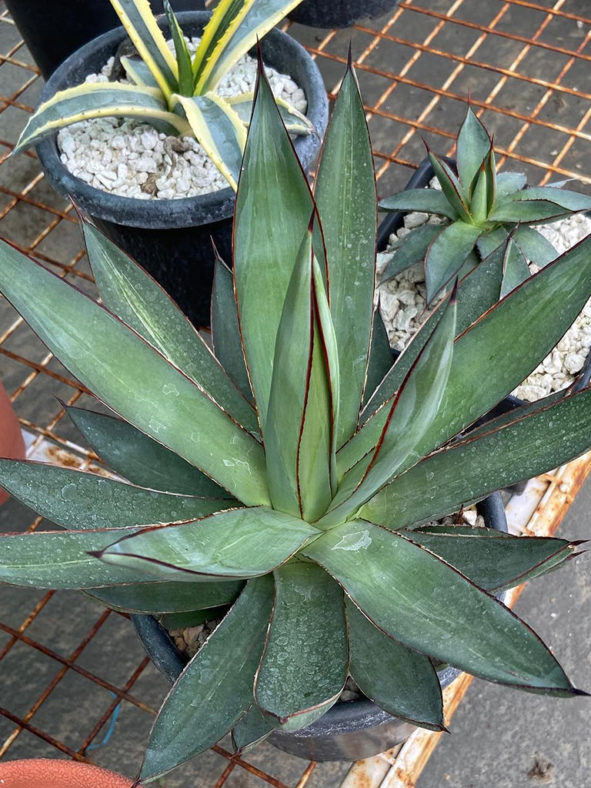Scientific Name
Agave × romani Hort.De Smet ex Baker
Synonym(s)
Agave romani
Scientific Classification
Family: Asparagaceae
Subfamily: Agavoideae
Genus: Agave
Etymology
The specific epithet "romani (roh-MAHN-ee)" means "Roman." Agave × romani is often listed with the specific epithet misspelled as "romanii."
Origin
Agave × romani is an old hybrid resulting from a cross between Agave filifera and Agave mitis var. albidior. It is created by the Belgian Agave collector Jos de Vleeshouder.
Description
Agave × romani is a succulent plant that forms rosettes of pale green to bluish-green leaves with nice red-brown edges. The leaves are thick, fleshy, channeled with short red-brown spines along the edges and a terminal spine. This hybrid is quite variable in size and color of the leaves.

How to Grow and Care for Agave × romani
Light: Like all Agaves, this plant requires full sun to partial shade. If growing A. × romani indoors, choose a bright, sunny window with as much sun as possible. From spring to fall, it loves going outside.
Soil: A. × romani will tolerate most soils if it has good drainage, but it prefers sandy or rocky soil.
Hardiness: During the growing season, it likes warm temperatures, while in winter, when resting, this succulent enjoys cooler temperatures. A. × romani can withstand temperatures as low as 15 to 35 °F (-9.4 to 1.7 °C), USDA hardiness zones 8b to 10a.
Watering: From spring to fall, water thoroughly when the soil becomes dry. In winter, water sparingly about once a month. Plants in containers require more frequent watering than those in the ground.
Fertilizing: Give your A. × romani a small amount of fertilizer in the spring during the first two years. Established plants seem to take care of themselves.
Repotting: If you notice your A. × romani becoming pot-bound, repot it with fresh soil in a new pot slightly larger than the old one. Give the plant a week or so to readjust before watering it again.
Propagation: Since it can take years to produce seeds, A. × romani is usually propagated by offsets. The best time to remove the offsets is in spring and summer. Sow the seeds in spring.
Learn more at How to Grow and Care for Agave.
Toxicity of Agave × romani
A. × romani is not toxic to humans but may be mildly poisonous to children and pets.
Links
- Back to genus Agave
- Succupedia: Browse succulents by Scientific Name, Common Name, Genus, Family, USDA Hardiness Zone, Origin, or cacti by Genus
Photo Gallery
Click on a photo to see a larger version.


